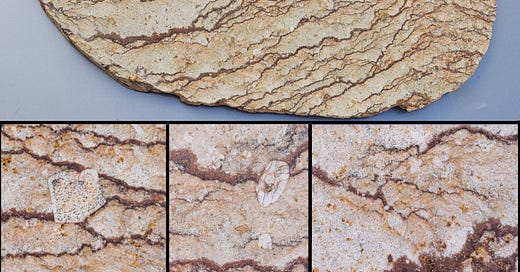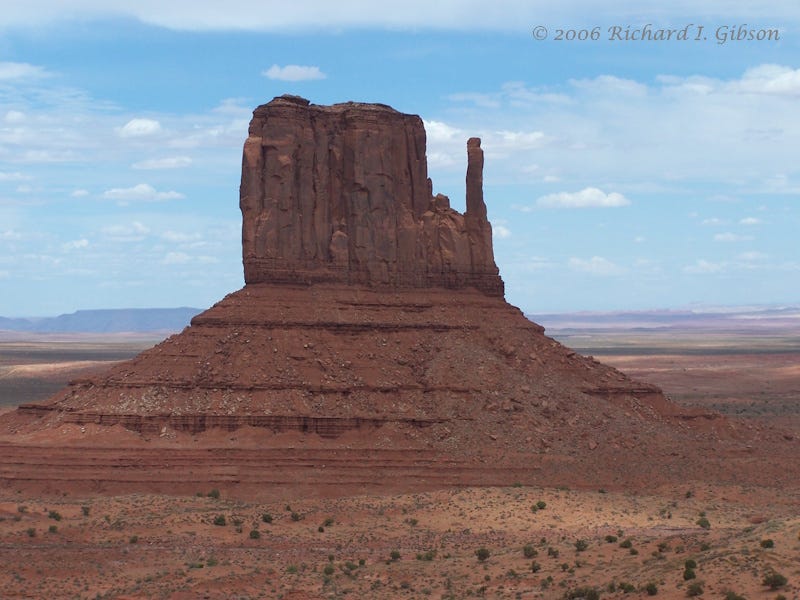Life in the USA is not normal. It feels pointless and trivial to be talking about small looks at the fascinating natural world when the country is being dismantled. But these posts will continue, as a statement of resistance. I hope you continue to enjoy and learn from them. Stand Up For Science!
I’ve had this slab a long time – I got it just because it was pretty. It took some work to determine that it’s probably part of the Shinarump member of the Chinle Formation. The Chinle is a variable package of continental rocks laid down in rivers, lakes, mud flats, and wind-generated dunes during the Triassic Period, about 228 million years ago (the Carnian stage of the Triassic) in what is now Arizona. The Chinle is one of the formations that contribute to the red colors in the Painted Desert of Arizona, and it holds most of the petrified wood in Petrified Forest National Park.
As a side note, why were there great forests growing in what is now Arizona during the Triassic, a time famous for its desert conditions? One possibility is the rainy time known as the Carnian Pluvial Event. More information on that in this post at the History of the Earth Calendar.
The Shinarump member is a conglomerate or sandstone, and in places it contains volcanic ash. Continental deposits like this are often reddish, purple, or brown because the iron they contain is oxidized. Iron oxide is essentially rust.
The complex bands in my slab are not beds of sand, but rather are expressions of migrating oxidation-reduction fronts created by water percolating through the rock. Here, the banding is enhanced by iron-fixing microbes that live in the rock and help concentrate the iron oxide cement in the sandstone, forming the dark brown bands in the slab (Burgess et al., 2016, The geologic context of wonderstone: A complex, outcrop-scaled pattern of iron oxide cement: Sedimentary Research, 86:498). The iron oxide cement is essentially the waste product of the microbes’ metabolism.
The bands are a type of liesegang bands, which are often concentric and/or parallel to cracks and surfaces in a rock where the water came in and focused the iron oxide deposits, with the iron coming from original siderite, iron carbonate that was dissolved and oxidized. I suspect that these are irregular because of the way the microbes grew and lived or because of irregularities in the distribution of iron and porosity and permeability in the rock, or some combination of those factors.
The slab also contains scattered large, well-formed crystals of feldspar. My guess for their origin is as grains that were part of a volcanic ash eruption. They seem to cut across the brown bands, which at first glance might make you think they came later, but I suspect they were there, but inhibited the flow of iron-rich water, kept the microbes from living in the space they occupied, and by their low-iron chemistry, just kept the iron oxide cement from forming. But the feldspar grains seem unexpectedly well-formed, suggesting they may have grown in place.
The entire slab is 25 x 26 cm (and about half a centimeter thick). Cat. No. 1714.
We’ve talked about the Chinle Formation before, in this post about uranium minerals.
The Chinle Formation is named for Chinle, Arizona, whose Navajo name means “flowing out,” for the water that flows from the Canyon de Chelly in northeastern Arizona. According to the Glossary of Geology, shinarump is a colloquial term used in the southwestern U.S. for silicified wood. This most likely came from Native American usage, reported by explorer John Wesley Powell. A report by H.E. Gregory of the USGS (1913, The Shinarump Conglomerate: American J. of Sci. 35:208, p. 430) indicates that this usage derived from the name of the Paiute Wolf God, Shinarav Mukwankunt, who used shards of petrified logs as weapons.
The uppermost layers of some of the mesas and buttes in Monument Valley contain the Shinarump Conglomerate.






We were just in Yellowstone Park and the banding in your Chinle piece is similar to the mini terraced deposits at Grand Prismatic Spring. Very beautiful.
It's good to stay connected to our sense of the natural world. Those of us with a geologic bent understand that the unsettling times we are currently in are a tiny, tiny blip in the history of this planet we share. That doesn't make it easier, but it does give me some solace when I pause long enough to regain this perspective.